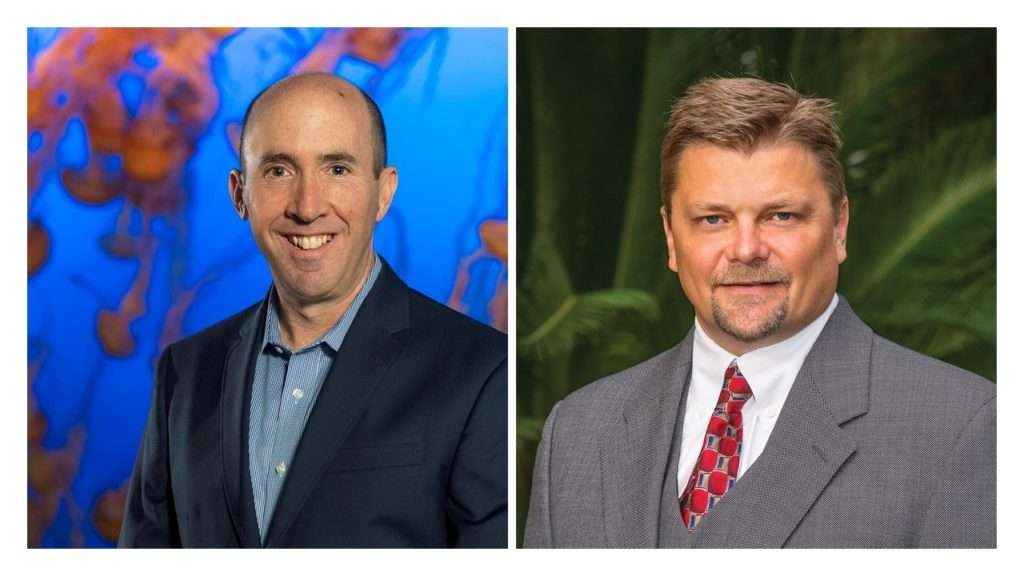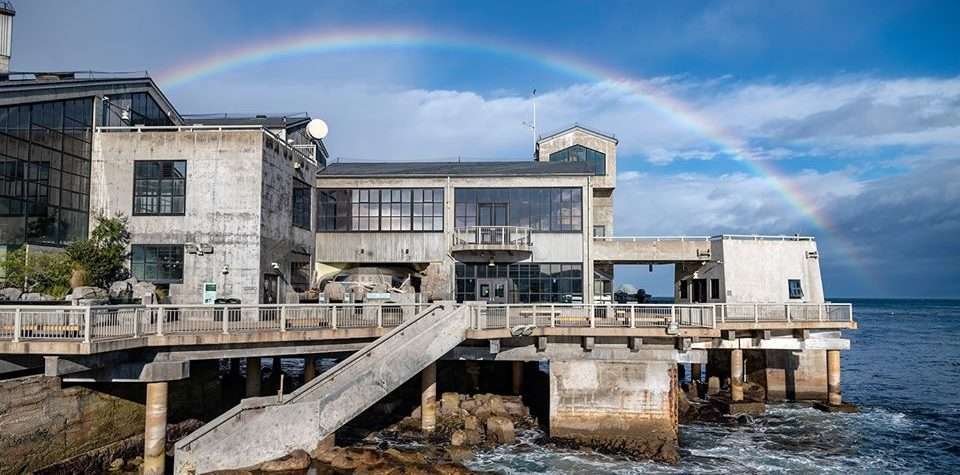by Joe Kleiman, InPark Magazine News Editor
With the COVID-19 pandemic shutting down attractions worldwide, operators have been faced with a tough decision – deciding what portions of their operations are necessary to maintain their facilities in preparation for an undetermined reopening. Zoos and aquariums have a special challenge in being responsible for thousands of animals reliant on human care.
“Members of the Association of Zoos and Aquariums are approaching total closure,” says Dan Ashe, President and CEO of AZA (Association of Zoos & Aquariums), which represents and accredits over 230 zoos and aquariums in North America, Asia, and Europe. “Over 90 percent of our membership is currently closed, and that number continues to rise. AZA members are taking drastic actions to maintain the viability of their facilities while also maintaining commitments to provide exceptional care of their animals. This pandemic uniquely impacts zoos and aquariums with animals to care for – our members can’t simply turn off the lights and walk away for months. That is the message we have been delivering to Congress and the Administration as we seek funding as part of any economic relief legislation. We will continue to partner with the broader museum and travel and tourism communities to secure support for our member facilities.”

(L) David Rosenberg, Monterey Bay Aquarium (R) Shawn Dixon, San Diego Zoo Global
InPark news editor Joe Kleiman discussed the impact of COVID-19 on the zoo and aquarium community with executives from the Monterey Bay Aquarium, San Diego Zoo Global, and the AZA. To understand the full impact requires an examination of a number of factors:
• Preparations made prior to closure
• Organization of the animal care teams
• Risk of viral transmission to animals
• Use of technology for public outreach during closure
• Community relations and human resources
• The road to re-opening
• Lessons from the pandemic
THE CLOSURE
Both the Monterey Bay Aquarium and San Diego Zoo Global are members of four leading industry associations. In addition to AZA, both are members of the World Association of Zoos and Aquariums (WAZA), the American Alliance of Museums (AAM) and the International Association of Amusement Parks and Attractions (IAAPA). Membership in these organizations has opened multiple channels of communication with other zoos, aquariums, and attractions on a global basis, enabling industry members to monitor the path of the global COVID-19 outbreak since it was first reported in December, 2019.
In June 2019, David Rosenberg, in his role as 2019 IAAPA Chair, stood onstage in Shanghai and opened the IAAPA Expo Asia. Less than a year later, he was keeping an eye on the spread of a new virus in China. As an officer of the IAAPA board, he would play a role in the decision made in March 2020 to postpone this year’s expo in Macau by a year. As the Vice President of Guest Experience at the Monterey Bay Aquarium in Monterey, California, he was also working with other aquarium executives and his teams to prepare for a closure of the famed aquarium should the virus come stateside.
“We were definitely watching China,” he says, “But we were much more focused on a local geographical area. We made sure to follow California and CDC guidelines. We watched the situation for months, so that we were not caught by surprise. We made sure we knew what others were doing. In addition to being part of AZA and IAAPA and following IAAPA best guidance, one unique thing that we did in this situation is that we created ongoing communication with other Northern California attractions.”
Three hundred eighty miles to the south, San Diego Zoo Global was preparing to close both its San Diego Zoo and San Diego Zoo Safari Park. “As a zoological association, we’ve prepared for regional and global scale crisis. We train and modify our business plans continuously,” says Shawn Dixon, COO of San Diego Zoo Global. “Disease outbreak with animals, bird flu, economic disasters, forest fires, COVID-19 – these touch on every aspect of our business – supply chain, financial stability, impact on the community. We started discussing the corona virus situation in China early on in December. By mid-January, we had task forces established to work on problems and create solutions, comprised of specialists in each area – business continuity, supply chain, human resource and staffing, communications/PR – both internally and externally. Animal health and safety, the structure of our teams working with animals, safety protocols for care were a priority. As much as one can plan, this whole process has been very on-the-go, working the plans as the situation developed. We’re fortunate that AZA has a great online communication platform for sharing ideas and challenges. Through discussions with our colleagues, we could actually watch the wave of the virus’ impact around the country in real time.”
ANIMAL CARE MANAGEMENT
Both Rosenberg and Dixon report that they have sufficient reserves of food on hand and that there appears to be no impact on the supply lines for additional goods as needed.
At Monterey Bay Aquarium, animal husbandry specialists are split into two teams working in rotation to ensure that staff are able to take time off. The Aquarium has also maintained its sea otter rescue and rehabilitation program during this period.
VIDEO: San Diego Zoo and San Diego Safari Park during closure
San Diego Zoo Global developed backup plans for its core staff that could move between its two properties. “The first thing we had to do,” says Dixon, “was to work with local government health officials to make sure animal care was considered an ‘essential service.’ Having two groups meant that if someone in one group was infected, there would be no cross-contamination with the other group. We also determined key areas for cross-training and cross-utilization of other staff if needed.”
THE TIGER FACTOR
On April 5, 2020, New York’s Wildlife Conservation Society (WCS) announced that after nine tigers and lions at the Bronx Zoo developed a dry cough, one was tested, with positive results, for COVID-19. It is believed by WCS that the “cats were infected by a person caring for them who was asymptomatically infected with the virus or before that person developed symptoms.”
In a prepared statement, AZA’s Ashe along with Robert Hilsenroth, DVM, Executive Director of the American Association of Zoo Veterinarians (AAZV), said: “…AZA-accredited members have protocols, procedures, and precautions in place when a disease situation like this arises at a facility. All AZA members were advised in real-time, are acting on the latest information from the veterinary staff at Bronx Zoo, and are consulting their colleagues to identify and implement protective and preventive practices. They all have access to trained veterinary professionals, as well as to the extended AZA and AAZV networks of professionals should a similar situation arise at their facility.”
In its own statement, San Diego Zoo Global stated: “With the increased challenge posed by the community spread of COVID-19, we have further increased our biosecurity measures. Many of the same measures used to protect people (i.e. physical distancing, face covers, hand washing and disinfection) also serve to prevent the spread of COVID-19 to our animals. When wildlife care professionals are unable to ensure physical distancing, we use additional measures.
“Through communications received from scientists around the world, we are aware that great apes and possibly other primates, bats, carnivores and suids (pigs) may be impacted by COVID-19. Although none of the animals in our care have been affected, San Diego Zoo Global veterinarians and wildlife care professionals are discussing increased biosecurity measures, just as we have for other infectious diseases such as virulent Newcastle disease and avian flu.”
“While the chances of the transmission of coronavirus from a human to an animal are low, we know that it is possible based on the situation at the Bronx Zoo and several other domestic animal cases,” Dr. Mike Murray, Director of Veterinary Services at the Monterey Bay Aquarium, tells InPark. “The species in our collection of most concern would be our southern sea otters. As a precaution, we already implemented social distancing practices for our animal care staff, which includes maintaining six-foot face-to-face distance from the animals during all interactions with the exception of necessary medical exams. Our animal care staff will also begin wearing non-surgical cloth masks when interacting with the otters. Our staff will additionally also wear masks when preparing food for the otters, along with protective gloves which had already been required.”
THE VIRTUAL WORLD
Museums, zoos, aquariums, and other attractions worldwide are reaching out to their communities and fans through online programming, creating virtual versions of themselves. Here are some of the ways Monterey Bay Aquarium and San Diego Zoo Global are reaching out via the web:
ONLINE CAMS – Both organizations have seen a substantial increase in viewership of their exhibit webcams. For San Diego Zoo Global, “We’ve seen a 1000% increase.” During the closures, a new webcam was added to the Safari Park’s Butterfly Jungle, with at least one more new webcam in the works for other habitats. Monterey Bay Aquarium’s viewers find images of the ocean relaxing during a stressful time of sheltering at home. “Our moon jelly cam is extremely popular,” says Rosenberg.
SOCIAL MEDIA – “Our use of social media campaigns shot up and the viewership shot up,” says Rosenberg. “It’s created a different kind of connection with our visitors and that’s good for the aquarium. We’re using Facebook Live a lot more, because we can also use it remotely.” An online presence, says Dixon, “Is an important way to stay engaged with visitors, with donors, and with the world around us during this time.”
EDUCATION – Both Monterey Bay Aquarium and San Diego Zoo Global are offering educational plans and materials free of charge for homeschooling and remote teaching during this period. “We’re using our current platforms as well as enhancing what had for the traditional classroom structure to homeschool and remote,” says Dixon. “We launched free online courses for high school and middle school groups based on taxonomic groups through the San Diego Zoo Global Academy.”
At Monterey Bay Aquarium, according to Rosenberg, “Our Education Department has come up with options for homeschooling that can be used by educators and teachers as well. We’ve created curriculum, games, and activities. We now have two online self-guided video classes up at the Aquarium website as well. You can see those and all of our current offerings at this page of our site: https://www.montereybayaquarium.org/for-educators/learning-at-home.”
VIDEO: InPark visits Monterey Bay Aquarium, November 2019
COMMUNITIES SMALL AND LARGE
In 2018, 5.5 million people visited the San Diego Zoo and San Diego Zoo Safari Park. Large crowds like that get hungry and it’s no surprise that San Diego Zoo Global operates a substantial food & beverage operation. “We made sure that food didn’t go to waste. In the week before we closed our gates, we took that food and we fed our staff breakfast and lunch every day. Afterwards, we donated the remainder to a food bank.” For all of 2019, San Diego Zoo Global donated over 1,200 pounds of food to Feeding America as part of its community outreach. The overall donation for the last few days before closing amounted to 2,000 pounds.
One commonality between the Monterey Bay Aquarium and San Diego Zoo Global is the use of the terms “family” and “community” to represent both those within their gates and without. Neither institution has furloughed or laid off staff during this period. All staff currently continue to be paid regardless of whether or not they remain on premises, a number working remotely. “We create a few videos per week for them with updates,” says Dixon. “There’s a lot of communication using Zoom.” “The big thing is to stay connected with staff, including our volunteers” says Rosenberg. “The Aquarium has a huge volunteer pool. I miss seeing them. One of the popular events that’s sprung up is evening happy hours online.”
Throughout the industry, closure due to COVID-19 is impacting zoos and aquariums both small and large. On April 7, the Sacramento Zoo, with annual attendance of 500,000, announced it would begin layoffs and furloughs for the majority of its staff. Two days earlier, Chicago’s Brookfield Zoo, with annual visitation of two million, announced the same. While Monterey Bay Aquarium is currently able to maintain its staffing levels, it is continually evaluating the long-term situation in light of prolonged shelter-in-place orders.
The industry has support structures in place for seeking solutions as it deals with widespread closures. Both Rosenberg and Dixon point at the advocacy efforts of industry associations like AZA, AAM, and IAAPA to secure federal funding for attractions. They also mentioned the networking opportunities within these organizations. “Going through the AZA as a collective group, there is a collective impact,” says Dixon. “All 236 members have been impacted.”
“Attractions are dynamic,” says Rosenberg, “They operate with cost controls when needed due to ebbs and flows with visitorship. So far, there’s some leeway, but not enough, on federal funding. The small business funding in the stimulus package looks good, but larger businesses are impacted as well.
“Monterey relies on its tourist industry. Think of the Aquarium as the anchor store in the area. It’s a very different feeling not to see many people in this area. The Aquarium is on Cannery Row. Everything is empty now, including the hotels. It’s very strange to see. When I see it, I think this must be what it was like when the canneries all shut down. In a small town like Monterey, the missing tourists makes it feel very different .”
THE ROAD TO RE-OPENING
Both Monterey Bay Aquarium and San Diego Zoo Global are looking to federal, state, and local guidance as to when and how to reopen. Dixon believes the reopening may follow the orders for closures, but in reverse order – from groups of 10 to 50 to 100 to 500 and so on.
For Rosenberg, the immediate future looks much like our current way of life, with limited admissions, restricted hours, and social distancing. In the long term, while operations may change, he sees the visitor experience returning to normal. “People like to be together in large groups,” he says. “And attractions help bring us together to create memories.”
WHAT CAN A PANDEMIC TEACH ABOUT CONSERVATION?
Zoos and aquariums like San Diego Zoo Global and Monterey Bay Aquarium continue their missions whether or not they’re able to open to the public. First and foremost, they are dedicated to conservation, research, and education, with their facilities acting as public portals to the work they conduct for wild environments and populations. As this latest global pandemic is a natural phenomenon, it is quickly becoming a tool to help promote their missions.
“This can teach us a lot about the natural world,” says Rosenberg. “It can teach us that the natural world more than ever needs us to step up to the plate and take care of it. The Aquarium becomes even more relevant as you see that. It’s Important to keep in mind that everything’s connected. The global pandemic is a reminder of that.”






